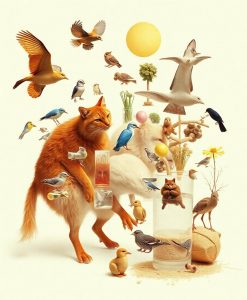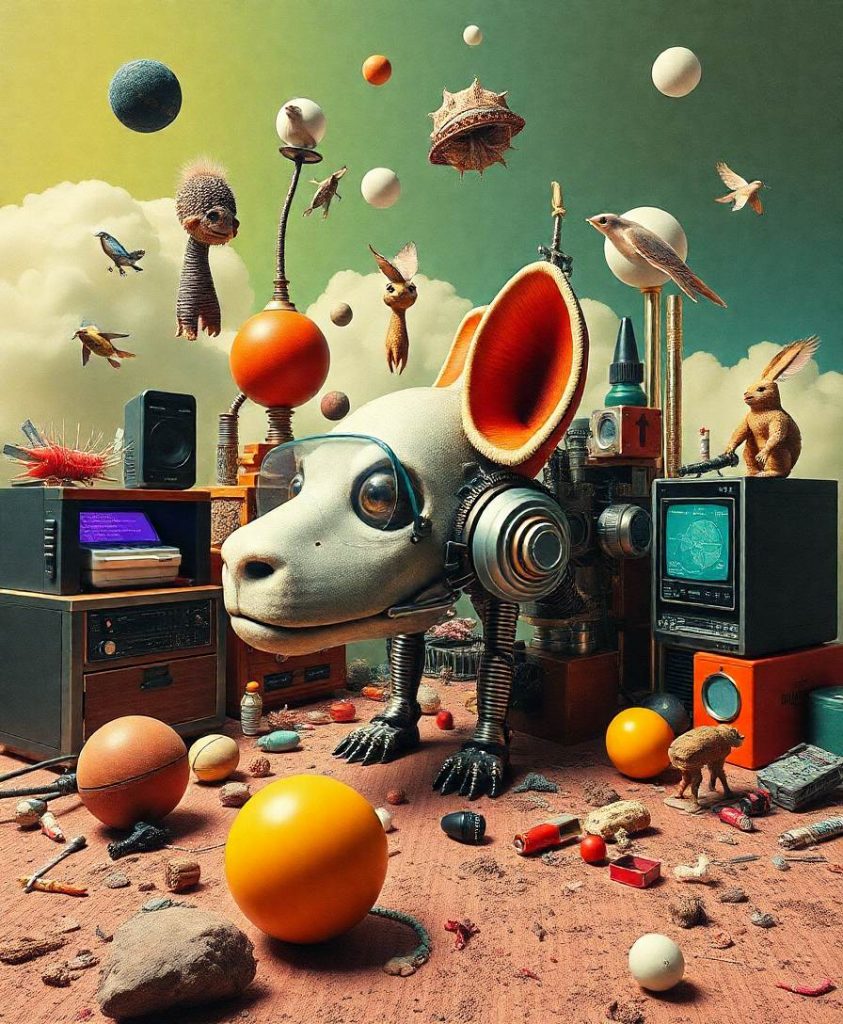Animal Minds: Beyond Simple Reactions
When we observe animals, we often glimpse something profound stirring behind their eyes—a momentary pause that suggests deeper cognitive processes than traditional science has recognized. Recent research challenges our understanding of animal intelligence, revealing that creatures from birds to mammals may possess sophisticated mental capabilities we’re only beginning to comprehend.
Cognitive scientists have long debated the inner workings of animal minds. Traditional perspectives viewed animal behavior as a series of reflexive responses—stimulus followed by programmed reaction. However, emerging research suggests something far more intriguing: animals might actually construct internal mental models that allow them to simulate potential scenarios, strategize, and make nuanced decisions.
This groundbreaking study delves into the hidden cognitive landscapes of animals, exploring how they might use internal mental maps to navigate complex environments. By examining evidence from behavioral research and neurological studies, scientists are uncovering remarkable insights into animal cognition that expand our understanding of intelligence across species. What emerges is a portrait of animal minds as dynamic, adaptive systems capable of sophisticated mental rehearsal and strategic thinking.
Could your pet be mentally rehearsing their next move?
When I watch my dog hesitate before leaping onto the sofa or see a bird pause mid-flight, I notice a flicker of thought behind their eyes. It’s easy to assume animals simply react to what’s immediately in front of them, driven solely by instinct. But beneath those quick movements and instinctive responses may lie a more intricate inner world—one where animals simulate future possibilities using internal maps and mental models.
Many of us have grown up believing that animal behavior is primarily based on simple cause-and-effect learning. The classic view suggests that animals respond to stimuli because they’ve learned to associate certain sights or sounds with specific outcomes. This idea supports the notion that their brains are limited in how they process sequences of events—what researchers sometimes call the “sequence bottleneck.” In this framework, animals are thought to be unable to mentally rehearse or imagine complex future scenarios, instead reacting reflexively to present cues.
But recent scientific insights are challenging this long-held belief. Evidence now points to a more sophisticated picture: animals may be capable of creating internal representations—mental maps—that allow them to predict what might happen next. They are not just reactive creatures; they are active thinkers, capable of simulating future events to guide their actions.
Think about the problem-solving skills of some mammals. When they face a tricky obstacle, they don’t just respond impulsively. Instead, they seem to internally test different strategies before deciding what to do. This suggests that their brains are constructing internal blueprints of their environment, enabling them to navigate complex spaces more effectively. Such mental simulations help animals adapt dynamically to changing circumstances, improving their chances of survival.
Birds offer another compelling piece of the puzzle. During rest or active sleep, certain species replay neural activity patterns that resemble mental rehearsals. These sequences are akin to internal practice runs, strengthening their ability to adapt and respond to future challenges. This neural replay hints at a form of mental simulation that extends beyond simple instinct or learned association.
The question then becomes: how deep do these mental simulations go? Are animals merely reacting based on learned habits, or can they imagine future needs and possibilities in a way that resembles human planning? The emerging consensus is that many animals are actively testing and updating their internal models—an ability that supports complex, adaptable behavior. It’s as if they are running internal simulations to see what might happen if they choose one action over another.
When your cat pauses before jumping onto a narrow ledge or a bird carefully navigates tricky branches, they may be engaging in mental rehearsals. These internal processes guide their decisions, helping them avoid danger or seize an opportunity. This ability to mentally simulate future scenarios is a vital survival tool, allowing animals to thrive in unpredictable environments.
This shift in understanding raises intriguing questions about animal intelligence. How similar are their internal models to human imagination and planning? Are some species capable of envisioning future needs and possibilities, or are their mental simulations more limited? While the full extent of animal cognitive ability remains a subject of exploration, the evidence suggests they possess a richness of inner life that we are only beginning to understand.
Observing animals with this new perspective, we start to see signs of internal mental activity in their behaviors. Their hesitation, their strategic movements, and their problem-solving efforts may be more than instinctive responses. Instead, they could be expressions of internal maps, mental rehearsals, and simulations—tools that help them adapt and flourish in an unpredictable world.
The old view that a sequence bottleneck constrains animal cognition is giving way to a more nuanced understanding. Animals are not just reacting; they are imagining, predicting, and actively updating their internal worlds. Recognizing this expands our appreciation of animal intelligence as a complex, dynamic phenomenon that continues to surprise us.
Exploring how animals think ahead: evidence of model-based cognition in the animal kingdom
Learn More: Model-based animal cognition slips through the sequence bottleneck
Abstract: In a recent article in TiCS, Lind and Jon-And argued that the sequence memory of animals constitutes a cognitive bottleneck, the ‘sequence bottleneck’, and that mental simulations require faithful representation of sequential information. They therefore concluded that animals cannot perform mental simulations, and that behavioral and neurobiological studies suggesting otherwise are best interpreted as results of associative learning. Through examples of predictive maps, cognitive control, and active sleep, we illustrate the overwhelming evidence that mammals and birds make model-based simulations, which suggests the sequence bottleneck to be more limited in scope than proposed by Lind and Jon-And.




